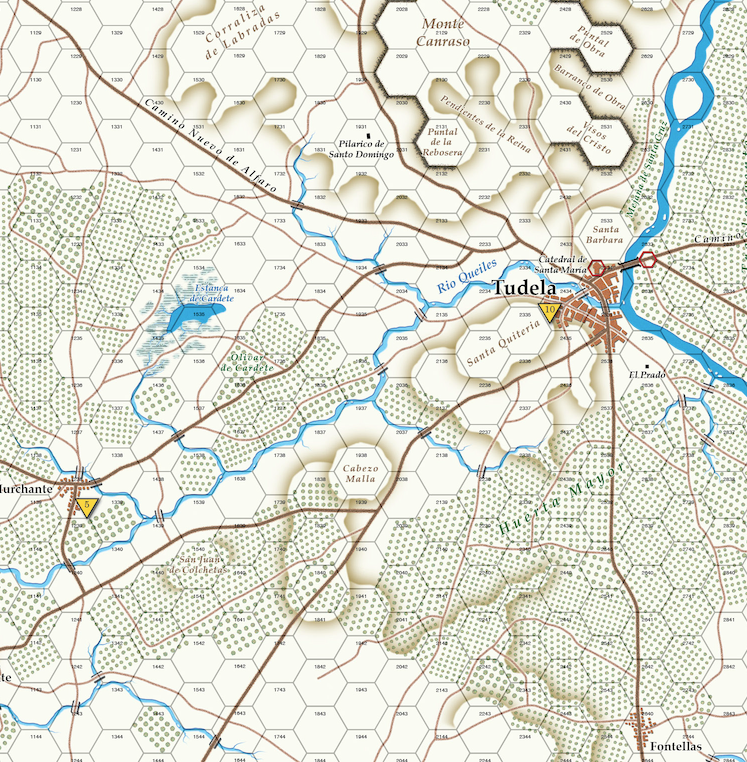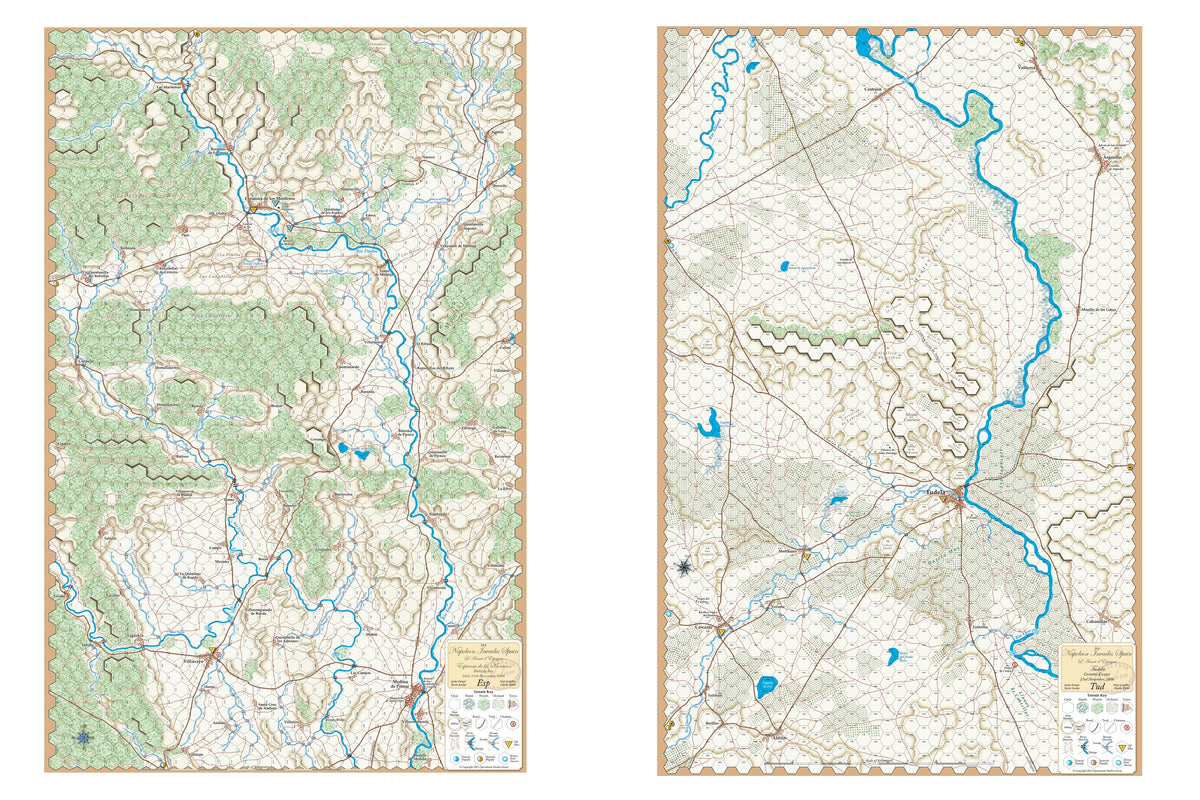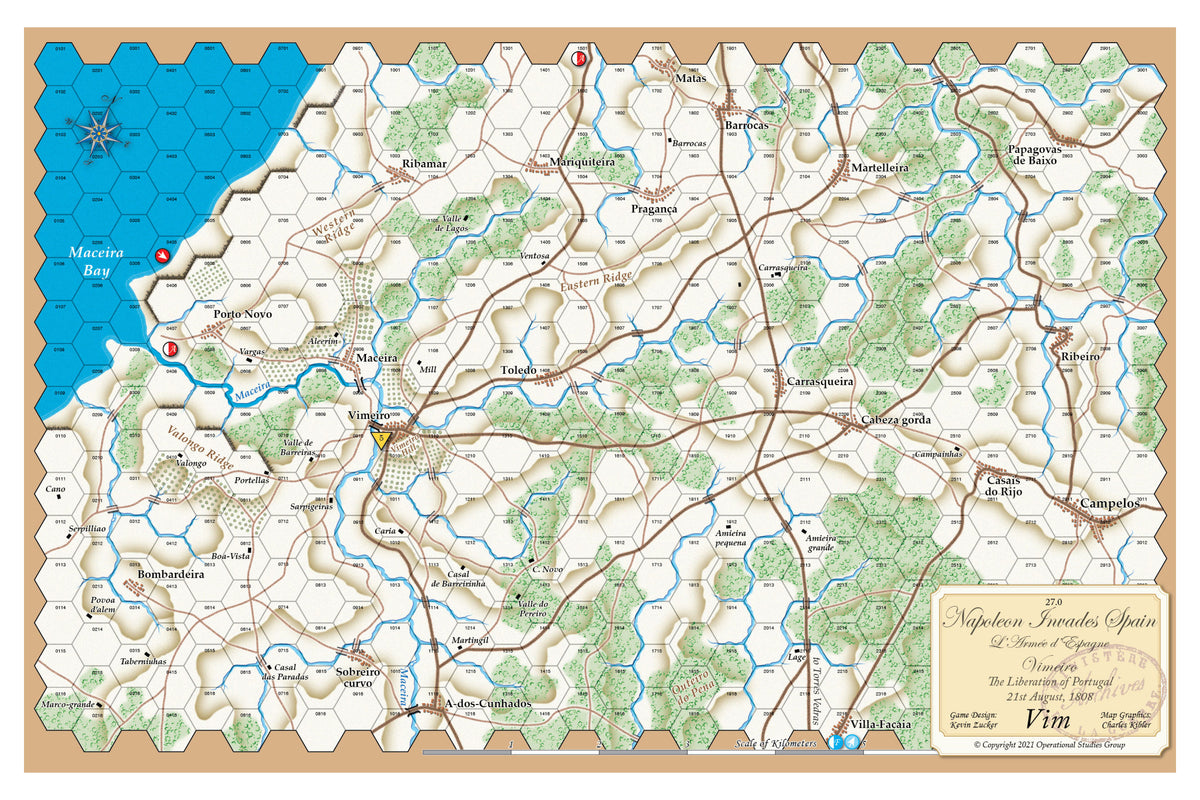
Napoleon Invades Spain

WINNER OF THE 2021 CHARLES S. ROBERTS AWARD
Best Napoleonic Board Wargame
Battles simulated
Battle of Vimeiro, 21 August 1808
Wanting to stop the British forces before they were reinforced, General Junot arrived on the road from Torres Vedras, forcing Wellesley to extend his line. Several French assaults were halted; the last—by the grenadiers—almost carried. After losing 1,500 killed and wounded, 300 prisoners and 12 guns, Junot’s Army was granted free passage back to France by the controversial Convention of Cintra. The British lost 134 killed, 534 wounded and 51 missing.
Image: Portuguese and British troops fighting the French at Vimeiro


Espinosa de los Monteros, 10 November 1808
A Spanish army under General Joaquin Blake advanced, hoping to cut the French lines of communication back to Bayonne, but instead was defeated by a French army under Marshal Lefebvre at Zornoza on 31 October, and retreated back to Bilbao. Blake then turned at bay to rescue one of his divisions trapped in the mountains (5 November), before resuming his retreat.
Image: The Cantabrian Mountains
Battle of Tudela, 23 November 1808
On 21 November Castaños was between Logroño and Tudela. The French III Corps had crossed the Ebro at Logroño, heading east towards Calahorra, while Marshal Ney’s column had reached the upper Douro valley and was headed in the direction of Tudela. This left Castaños’s army in serious danger of being trapped between two French corps.
Image: Battle of Tudela, January Suchodolski, National Museum in Warsaw


Battle of Coruña, 16 January 1809
After a desperate retreat across the mountains of north western Spain, the British army had reached the coast at Betanzos by the morning of 10 January 1809.
Image: Death of Sir John Moore at the Battle of Corunna, derived from an engraving by Thomas Sutherland and aquatint by William HeathImage
game components
napoleon invades spain
Each game includes:
Game Box
2 Maps 34"x22"
2 Maps 17"x11"
2 Counter Sheets (560 die-cut player pieces)
2 Booklets (System Rules and Study Folder)
14 Player Aid Cards (TRC x3, Initial Set-up x4, Casualty x2, Combat Results, Reorganization, Weather, Fog of War Card Instructions x2)
5 Resource Cards (Adding the Cards Folder, Combat Tables Folder, Orders Slip Sheet/Sequence of Play, Victory Worksheet, Cards Removed from Deck/Scenario Parameters)
NOT INCLUDED: Card Decks
This game uses the two TLNB Universal Card Decks (French and Coalition). If you do not have them in another OSG game, they can be ordered separately.
Visit our Game Components section for details

Quick to play, brilliantly researched and packed with historical flavour. A wonderfully elegant system that translates well to a wealth of battles with a lifetime of potential playtime, not to mention an education in Napoleonic history and warfare.
All TLNB games from OSG have beautiful and accurate maps, very well researched OOB, historical studies and research notes.
The Approach to Battle scenarios are, for me, the best part of the TLNB series allowing great insight into the development of battles and interesting variations on history.
Four interesting games - Vimiero very difficult for the French; Corunna the shortest with the British under pressure. Then two games where to my shock (based on my experience of Spanish armies in Napoleon's Quagmire) the Spanish won some of the time.
After many games in the series, there is clearly a consolidated game system and quite a solid rulebook.Played solo the short battles (Coruña and Vimeiro), Day Of Battle scenario, twice each, without cards. Short, intense and dynamic, especially Vimeiro. Though difficult for the French to win, it's a pleasure to try hard and face the challenge!
game Unboxing
napoleon invades spain
Watch Ardwulf's Lair unboxing of one of our newest games, Napoleon Invades Spain.
Game Maps
Napoleon Invades Spain
Each game includes four high quality maps (shown below): two 17"x22" maps and two 22"x34" maps.
Operational Studies Group (OSG) is a leader in the design and production of Napoleonic Wargames. Our maps are extensively researched, historically accurate, and printed on heavy cardstock in full color.







